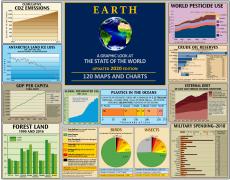Production
The essential data about production explained in 20 infographics. Detailed charts and tables covering world grain production, consumption, and stocks, aquaculture production by country, fossil fuel production gap, world plastic production and more. Learn the truth about production and how it relates to the state of the world on The Global Education Project website with un-biased facts from the most reliable sources.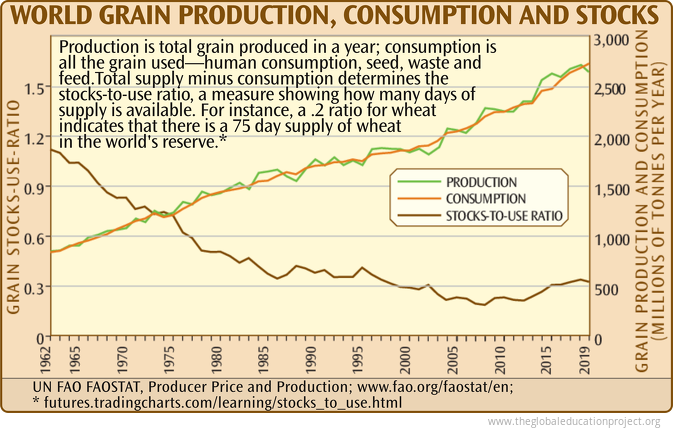 Increases in grain production brought about by irrigation and synthetic fertilizer and pesticide inputs have peaked and begun declining. As consumption surpasses production, the world's stocks of stored grain have been falling relative to each year's...
Increases in grain production brought about by irrigation and synthetic fertilizer and pesticide inputs have peaked and begun declining. As consumption surpasses production, the world's stocks of stored grain have been falling relative to each year's...
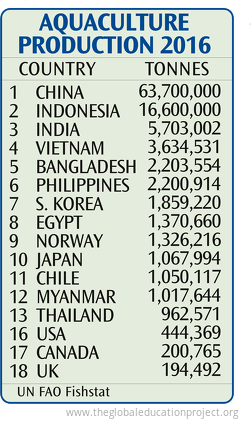 AQUACULTURE is the industrial farming in fresh or salt water of fish, mollusks, crustaceans and plants.
Aquaculture is rapidly increasing its annual global harvest and seems to offer hope for increased food production. However, for some of the more than...
AQUACULTURE is the industrial farming in fresh or salt water of fish, mollusks, crustaceans and plants.
Aquaculture is rapidly increasing its annual global harvest and seems to offer hope for increased food production. However, for some of the more than...
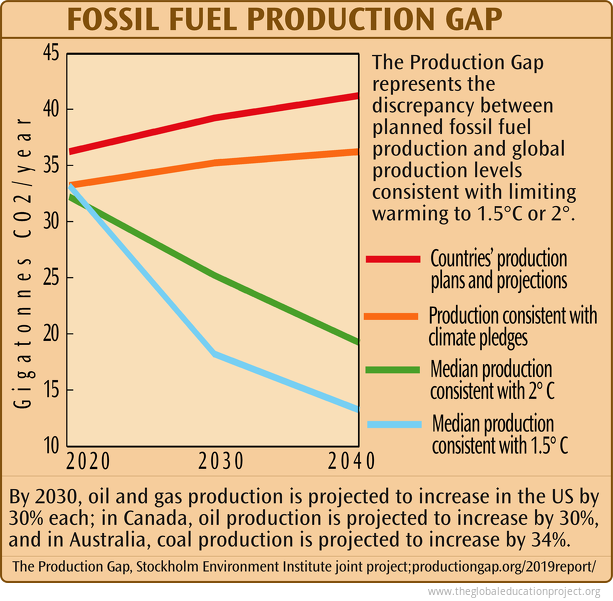 Countries are planning to produce about 50% more fossil fuels by 2030 than would be consistent with a 2°C global average temperature rise, and 120% more than would be consistent with a 1.5°C rise.
The production gap is largest for coal. By 2030, countries...
Countries are planning to produce about 50% more fossil fuels by 2030 than would be consistent with a 2°C global average temperature rise, and 120% more than would be consistent with a 1.5°C rise.
The production gap is largest for coal. By 2030, countries...
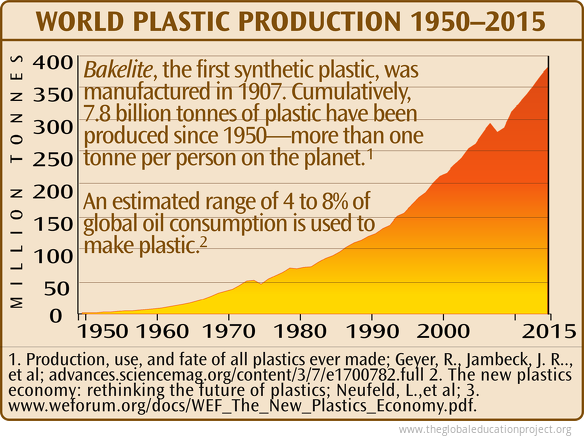 Over 90% of plastics produced are derived from virgin fossil feedstocks—accounting for about 6% of global oil consumption. This is equivalent to the total oil consumption of the global aviation sector.
Over 90% of plastics produced are derived from virgin fossil feedstocks—accounting for about 6% of global oil consumption. This is equivalent to the total oil consumption of the global aviation sector.
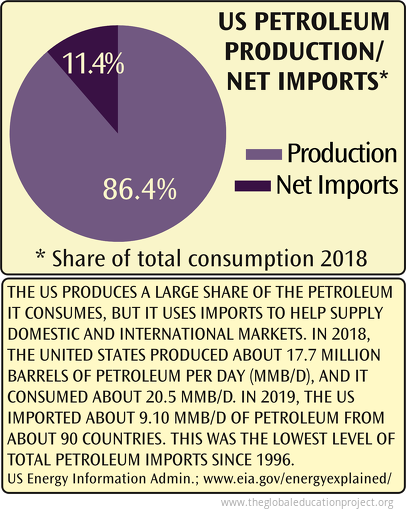
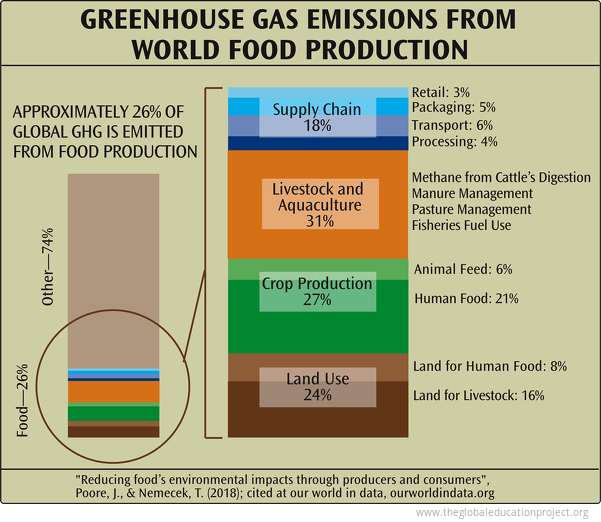
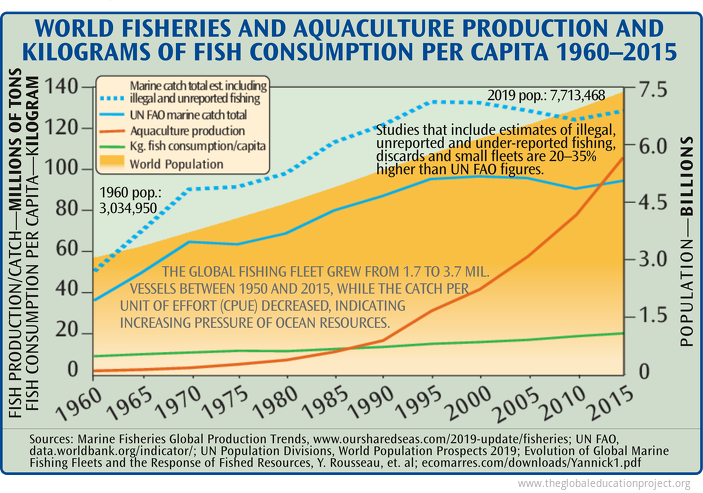
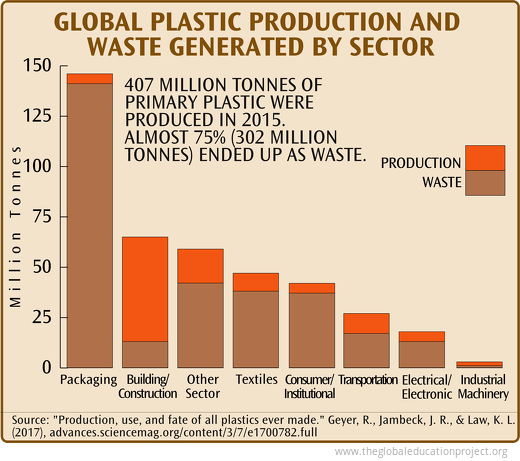 Packaging represents 26% of the total volume of plastics used. Even when managed adequately, the process of recycling plastic ultimately produces a lower quality product and the required shipping, washing, chopping and melting also has a detrimental...
Packaging represents 26% of the total volume of plastics used. Even when managed adequately, the process of recycling plastic ultimately produces a lower quality product and the required shipping, washing, chopping and melting also has a detrimental...
Agricultural and food production has changed dramatically in the past 100 years as increasing population and consumption put pressure on the world's food supply. A look at the environmental impacts of agriculture and food; global distribution and nutrition;...
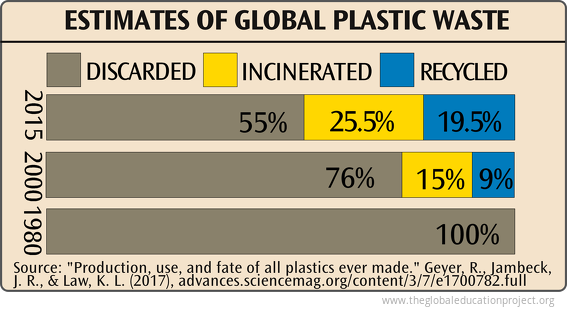 "Recycling delays, rather than avoids, final disposal. It reduces future plastic waste generation only if it displaces primary plastic production; however, this displacement is extremely difficult to establish.
"Second, plastics can be destroyed thermally....
"Recycling delays, rather than avoids, final disposal. It reduces future plastic waste generation only if it displaces primary plastic production; however, this displacement is extremely difficult to establish.
"Second, plastics can be destroyed thermally....
This section is an overview of the steep and rapid rise in the production and use of plastics; plastic waste management and mis-management; recycling; and the prevalence of microplastic debris in the environment.
Industrialized civilization is dependent upon cheap and reliable fossil fuel energy. This section includes a look at production, consumption, remaining known resources and the global carbon budget.
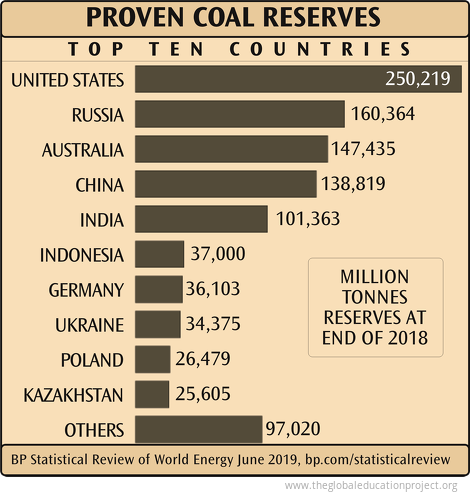 In 2014, coal-powered plants at electrical utilities in the US accounted for 39% of electricity production, 27.5% in 2018, and 23.5% in 2019. The decline is due to increased availability of natural gas, decreased consumption, increase in renewable power,...
In 2014, coal-powered plants at electrical utilities in the US accounted for 39% of electricity production, 27.5% in 2018, and 23.5% in 2019. The decline is due to increased availability of natural gas, decreased consumption, increase in renewable power,...
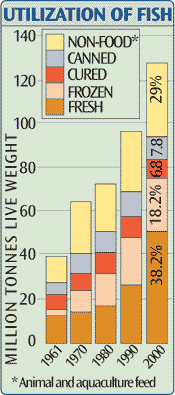 In 2017 around 22% of total global capture fisheries were used for non-direct human use, including fishmeal and direct feed, a large portion of which is used in aquaculture production.
"If four tonnes of wild caught anchovies are required as feed to...
In 2017 around 22% of total global capture fisheries were used for non-direct human use, including fishmeal and direct feed, a large portion of which is used in aquaculture production.
"If four tonnes of wild caught anchovies are required as feed to...
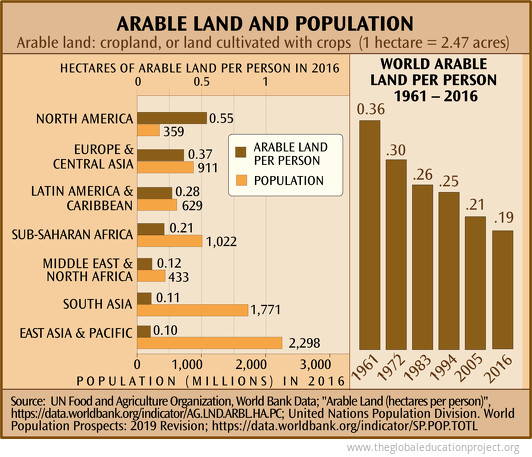 "In 1960, when the world population numbered only 3 billion, approximately 0.5 hectare of cropland per capita was available, the minimum area considered essential for the production of a diverse, healthy, nutritious diet of plant and animal products like...
"In 1960, when the world population numbered only 3 billion, approximately 0.5 hectare of cropland per capita was available, the minimum area considered essential for the production of a diverse, healthy, nutritious diet of plant and animal products like...
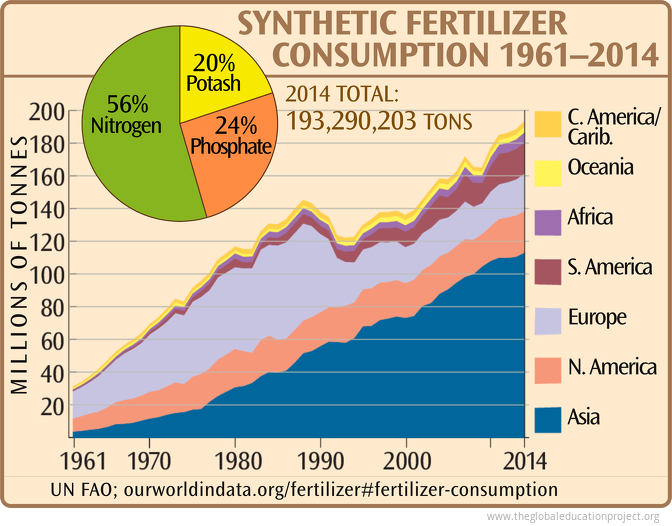 Nitrogen fertilizer production requires a large and affordable supply of natural gas.
Natural gas is a key feedstock (up to 90 percent of the total costs) in the manufacturing of nitrogen fertilizer for which there is no practical substitute. Nitrogen...
Nitrogen fertilizer production requires a large and affordable supply of natural gas.
Natural gas is a key feedstock (up to 90 percent of the total costs) in the manufacturing of nitrogen fertilizer for which there is no practical substitute. Nitrogen...
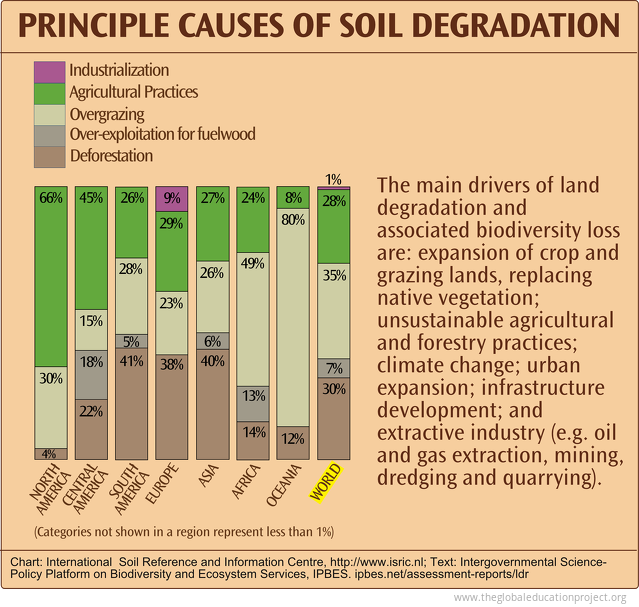 "About 2 million hectares of rainfed and irrigated agricultural lands are lost to production every year due to severe land degradation, among other factors." [1]
"It takes approximately 500 years to replace 25 millimeters (1 inch) of topsoil lost to...
"About 2 million hectares of rainfed and irrigated agricultural lands are lost to production every year due to severe land degradation, among other factors." [1]
"It takes approximately 500 years to replace 25 millimeters (1 inch) of topsoil lost to...
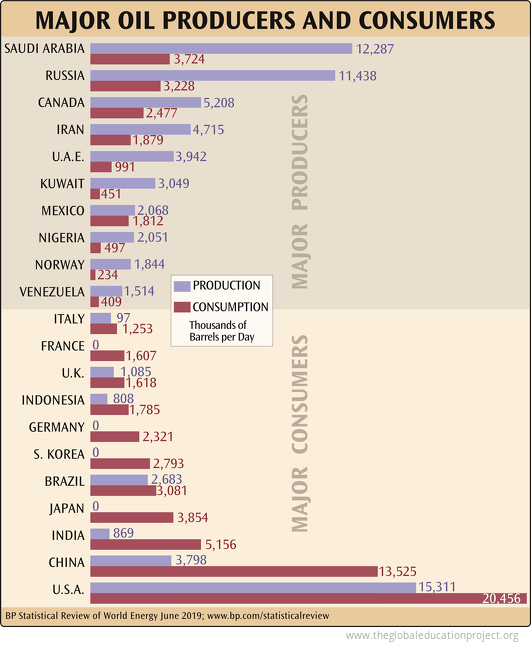 Coal has been used since the industrial revolution but only in the last 100 years have huge quantities of oil and gas been removed from underground reservoirs. Oil and gas are used as fuel energy in combustion engines and as "feed stock" for other industries...
Coal has been used since the industrial revolution but only in the last 100 years have huge quantities of oil and gas been removed from underground reservoirs. Oil and gas are used as fuel energy in combustion engines and as "feed stock" for other industries...
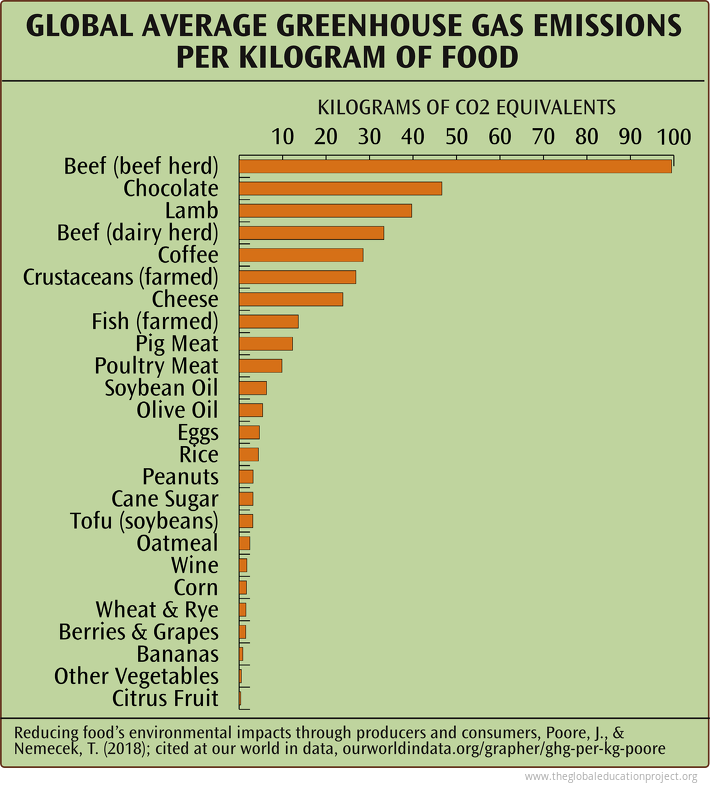
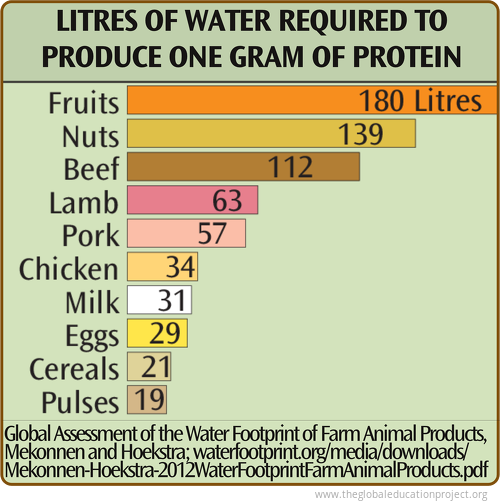
Page 1 of 1
Sign up for EARTH Dispatches
Enter you email below to get jaw dropping charts and maps delivered straight to your inbox.
Get the EARTH presentation
A 150 page high-resolution PDF containing all updated maps, charts and data on EARTH website; use as an information-packed educational slide show, printed booklet or a set of single-page handouts.
Learn More
